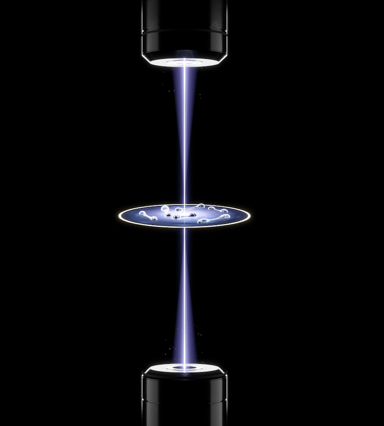Few to many – the emergence of a phase transition
In a new paper in Nature, Georg M. Bruun and collaborators from the universities of Heidelberg and Lund has used quantum simulation with cold atoms to explore how a Higgs mode connected to a quantum phase transition from a normal to a superfluid phase emerges particle by particle.

One of the most important ingredients to the success of modern physics is the formulation of effective theories. Here, microscopic details are neglected in order to obtain an efficient description in terms of macroscopically observable quantities. For example, a cup of water can efficiently be described in terms of properties like pressure, temperature, and density of the fluid instead of the position and velocity of each individual water molecule.
In addition to this simple averaging over all particles, completely new phenomena and behaviour emerge in complex systems. One striking phenomenon is the emergence of phase transitions. By this term, physicists describe the transition of macroscopic systems from one state of matter, like fluid, to a different state of matter, like gaseous. These transitions cannot be understood by simply extrapolating, for example, from the microscopic description of individual water molecules. Rather, one uses effective theories to describe such phenomena.
Such effective descriptions immediately lead to an important problem, already recognized by Greek philosophes and known as sorites paradox. When a single water molecule is removed from the cup that was discussed above, can the remaining system still be described as fluid water? At what point, when more and more molecules are removed, does this break down and the remaining system does not behave as a fluid anymore?
A similar question has now been studied by the experimental group of S. Jochim following a theoretical proposal of Georg Bruun. They used exquisite experimental control to prepare configurations of 2, 6 and 12 fermionic atoms in the ground state of a two-dimensional harmonic potential. The lowest excitation energy of these so-called “magic shell” configurations was then observed to depend non-monotonically on the interaction strength, and to consist only of coherently excited pairs of atoms from the highest filled to lowest empty shell. Using theoretical calculations by Georg Bruun and collaborators, these two features were identified as smoking gun signals of a few-body precursor of the Higgs mode associated with a quantum phase transition between a normal and a superfluid phase. The results show how quantum simulation with cold atoms can be used to unravel the intriguing question how macroscopic behavior and the thermodynamic limit emerges with increasing particle number.
